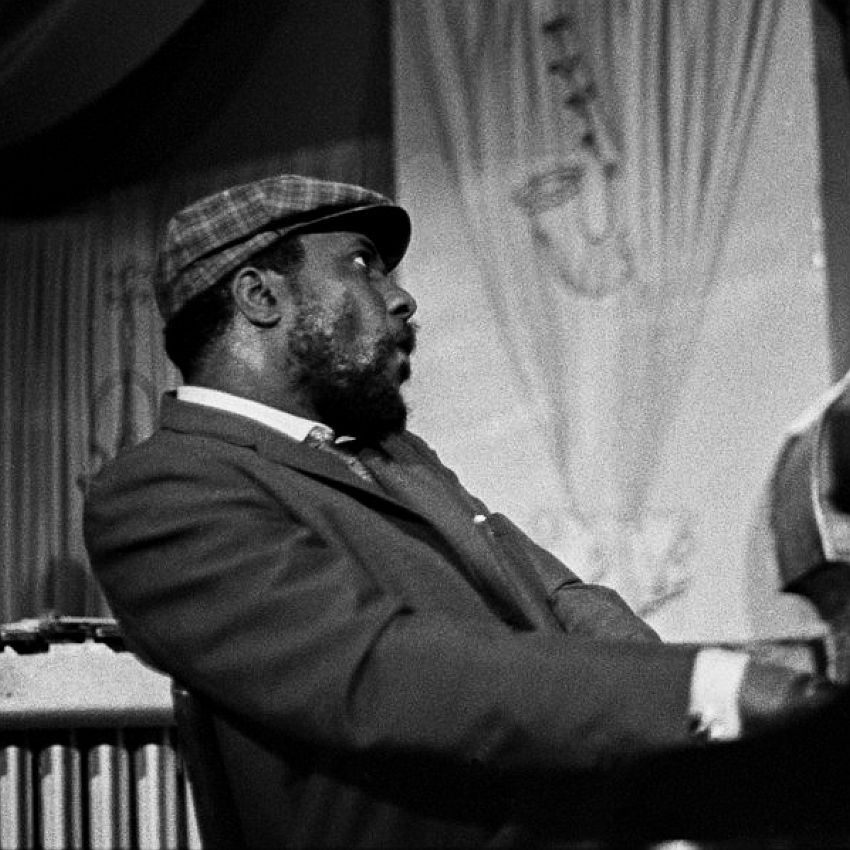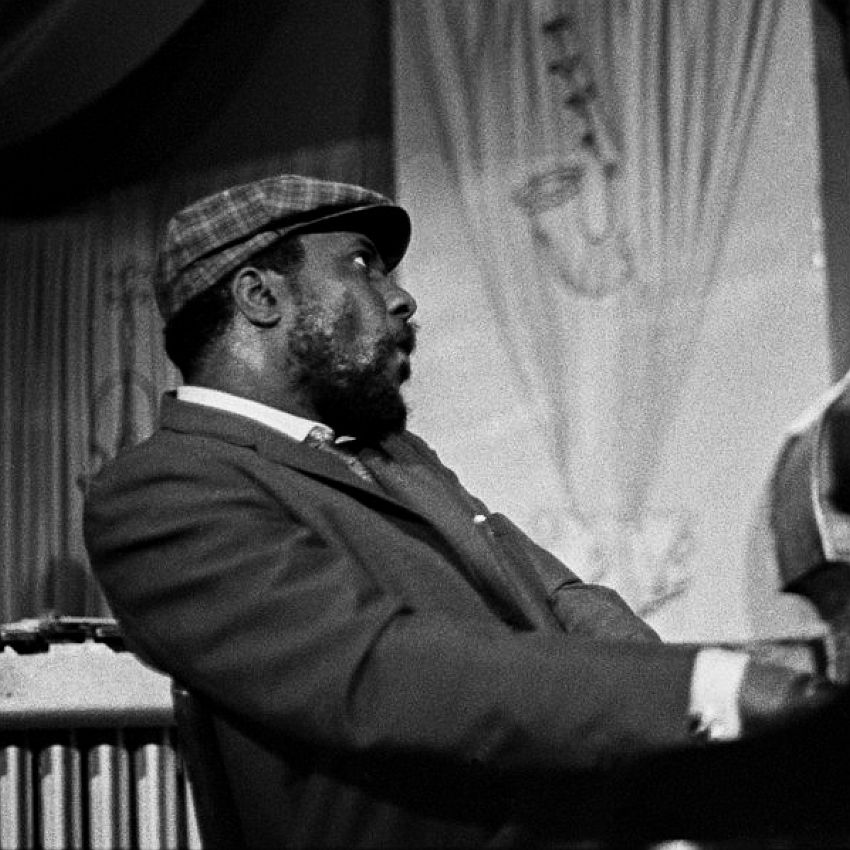
Chris Robinson has served more major keys than DJ Khaled.
In recent years record labels have bombarded jazz fans with a seemingly endless supply of “lost masterpieces” and newly discovered concert recordings. While some of these are superfluous (do we really need more live Keith Jarrett or Miles Davis albums?), others catch moments of such inspired creation that shelving them would do a disservice to the music. Bebop icon Thelonious Monk’s Palo Alto falls into the latter category. Recorded live in concert in October, 1968 at Palo Alto High School in California, it’s the unlikely result of the hustle of an enterprising 16-year-old jazz evangelist named Danny Scher, a quick thinking school janitor, and fortuitous timing—all laid against the backdrop of 1968 America.
Palo Alto lives up to the hype it will no doubt generate. It features Monk’s touring quartet, which includes his longtime collaborator tenor saxophonist Charlie Rouse, bassist Larry Gales, and drummer Ben Riley. Although the concert was of Scher’s making, the janitor is the reason we are able to hear it, as he offered to have the piano tuned in exchange for permission to record the concert. Following the show Scher received the tapes which found their way into his attic, where they sat for decades.
When Scher first telephoned Monk, the pianist and his group were in the middle of a multi-week run at the Jazz Workshop in San Francisco. Scher pitched the concert as a benefit for his high school’s International Club, which raised money for the Peace Corps and other charitable causes. It’s unknown how much the benefit angle resonated with Monk, but at the end of the day, he needed the money. He may be one of jazz’s most revered figures, but he was not doing well in the late 60s.
At the time of the concert, Monk had begun falling out of favor with critics; he was in debt to his record label Columbia, and less than six months removed from a seizure that put him into a coma. While his warhorse tunes, “Ruby, My Dear” and “Epistrophy” (both heard on Palo Alto), were iconic compositions of the bebop revolution of the 1940s, by 1968 Monk had been playing them for over a quarter-century. In many ways, jazz had moved on. Miles Davis’s Bitches Brew (and the fusion movement it spawned) was less than two years away. At the same time, former beboppers were tapping into funk, soul, and r&b in ways that—depending on your level of cynicism—were either an honest reflection of where the music was going or an attempt at cashing in. Jazz’s primacy as America’s popular music was long gone and despite the creative fire Monk still possessed, the zenith of his popularity and critical acclaim had passed.
Even though it might seem like it, an elite jazz artist performing at Palo Alto High was no freak occurrence. Scher had previously produced concerts there with pianist Vince Guaraldi, singer Jon Hendricks, and vibraphonist Cal Tjader; he would later go on to book Duke Ellington his senior year. Despite Scher’s entrepreneurial acumen, the Monk concert was in doubt up until the moment when Monk’s quartet pulled up to the high school parking lot in the Scher family van. Scher never received a signed contract from Monk’s agent, and tickets for the concert were not selling well. When Scher decided to put up posters in predominantly black East Palo Alto, the police warned him that doing so had the potential to stoke racial violence, as its residents had repeatedly taken to the streets to protest racial injustice in recent years.
Race relations and urban development in Palo Alto and East Palo Alto in the late 60s were much as they were across the United States: mid-century development plowed highways through black neighborhoods, effectively gutting black communities and cutting cities in two. Meanwhile racist real estate policies like redlining enforced de facto segregation. The result, as Monk biographer Robin D. G. Kelley points out in the liner notes, was that East Palo Alto had a much higher unemployment rate and significantly lower medium income than Palo Alto. So it should be no surprise that racial tensions between the two cities had been high for decades. Despite this, Scher ignored the police’s advice to advertise the show, which turned out to be the right decision, because East Palo Alto showed up for the concert, selling it out in the process.
For 47 minutes that October evening, some of the racial animus between the two cities took the night off.
Upon hitting the stage, Monk plinked down a few chords, Rouse and Gales played a few notes, and Riley gave his drum kit a quick once over—just a brief check to see how the room felt. It must have felt good, because instead of playing “Ruby, My Dear” at its usual slow ballad pace, the band took it at a sprightly medium swing tempo. Their immediate energy was an encouraging sign that the night would be special. During his solo Rouse mixes bebop with ballad phrasing, gliding with ease over Monk’s slanting accompaniment lines and Riley’s tidy brushwork. Where Monk might often land sharp jabs on the keys, here he’s just as light and nimble as Rouse.
“Well You Needn’t” is jaunty and playful. With its angular melodic line and accents on the weak beat, the tune is the very definition of syncopation (“well you neeDN’T”). The rapport Monk and Rouse had built up over years of playing together is on full display: as Rouse unfurls fresh melodies Monk interjects new ideas and problems for Rouse to consider, as if Monk was building an improvised, unpredictable slalom course for Rouse to negotiate.
As a pianist Monk won’t dazzle you with virtuosity—his playing is more about where and when and how he places the notes, not how many or how fast they are. During his solo Monk quotes the tune, refiguring and turning it inside out, fleshing out all of its possibilities. He’s more John Stockton than Lebron James, showing that a perfectly dropped dime can have as much impact as a vicious tomahawk dunk. Riley took the hits and fills he used to drive and augment Gales’s melodic bowed bass solo as the basis for his own showcase. Building upon what came before, each solo was an individual chapter of what became a sweeping novel.
Monk gave his colleagues a short break on a solo rendition of “Don’t Blame Me,” on which he shows the influence on his playing of the stride piano masters of the 1920s and 30s like James P. Johnson. For Monk, playing the piano was a full body exercise, and he’d never hesitate to stop playing, get up from his piano, and dance along to his band. Without the rest of the band playing, the mic was hot enough to catch what sounds like the piano bench creaking under Monk’s shifting weight. You can hear him dancing as he plays.
Following a relaxed and comprehensive exploration of “Blue Monk”—the one Monk song that every high school and college rehearsal room has heard millions of times—Monk yokes the band directly into “Epistrophy.” Riley gets the group bouncing with ringing cymbals and a cracking snare drum. At this point the band was buzzing. Players can easily get hung up on Monk’s melodic and rhythmic trickery, and often dedicate years to being able to play his tunes right. As Wynton Marsalis describes Monk’s harmonies in an Atlantic article celebrating Monk’s 100th birthday: they’re “too fucking weird.” “Epistrophy’s” chord changes are wholly unorthodox, but Rouse had been with Monk long enough to become one of the finest interpreters and practitioners of Monk’s works. Unbothered by the tune’s demanding chord structure, Rouse grabs it by the throat. Monk does him one better, playing with the abandon and momentum of a runaway train that doesn’t care that the bridge is out.
After the heat dissipates, Monk ends the concert with a brief solo barrelhouse treatment of the 1920s Tin Pan Alley hit “I Love You Sweetheart of All My Dreams.” And just like that, the Monk quartet left the appreciative audience, packed back into Scher the family van, and made the trip back to San Francisco for their gig at the Jazz Workshop.
Musically, the concert was a triumph. Even if Monk and the band saw it as just a paycheck, they refused to phone it in and turned in a performance that 52 years later will certainly end up topping many critics’ best of 2020 lists. From a social aspect, Scher feels that for one night, Monk’s performance helped call a “truce” between Palo Alto and East Palo Alto. For him and members of the community, it was a temporary balm for the tensions between the two cities. Naturally one concert could not solve decades of inequity, and even Scher’s claim of a truce may be naïve. Nonetheless, a night with a truth-is-stranger-than-fiction backstory could produce music that was nothing less than special.

